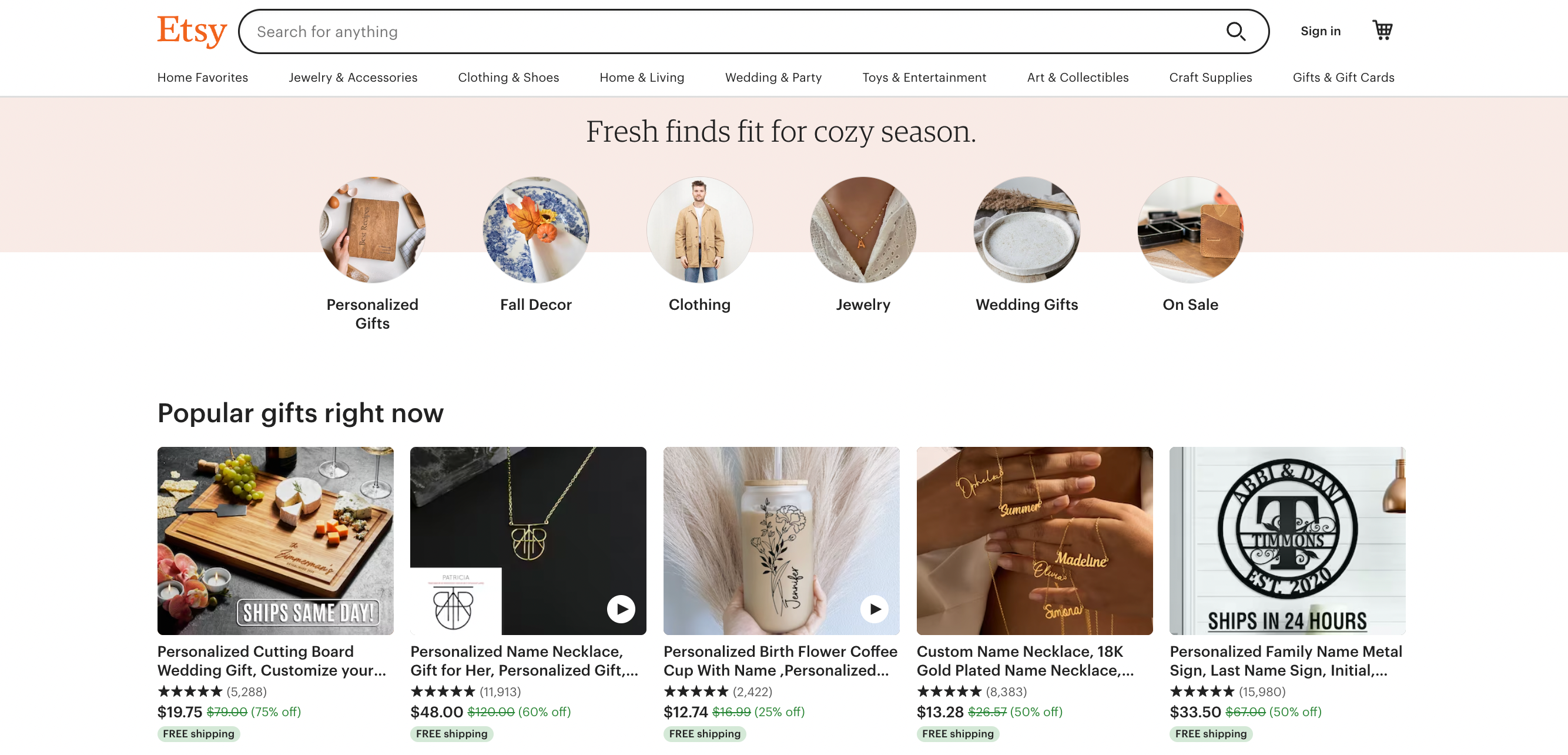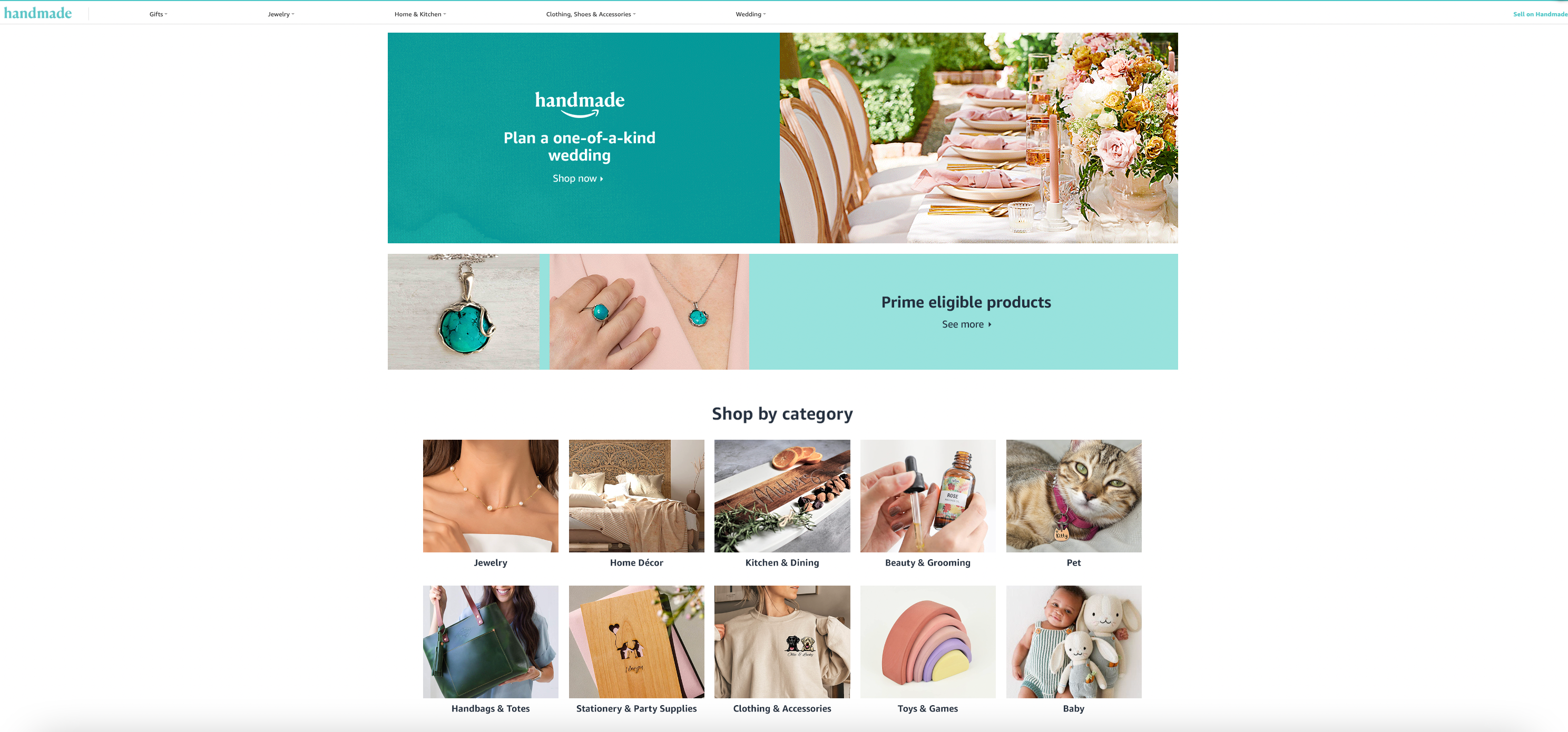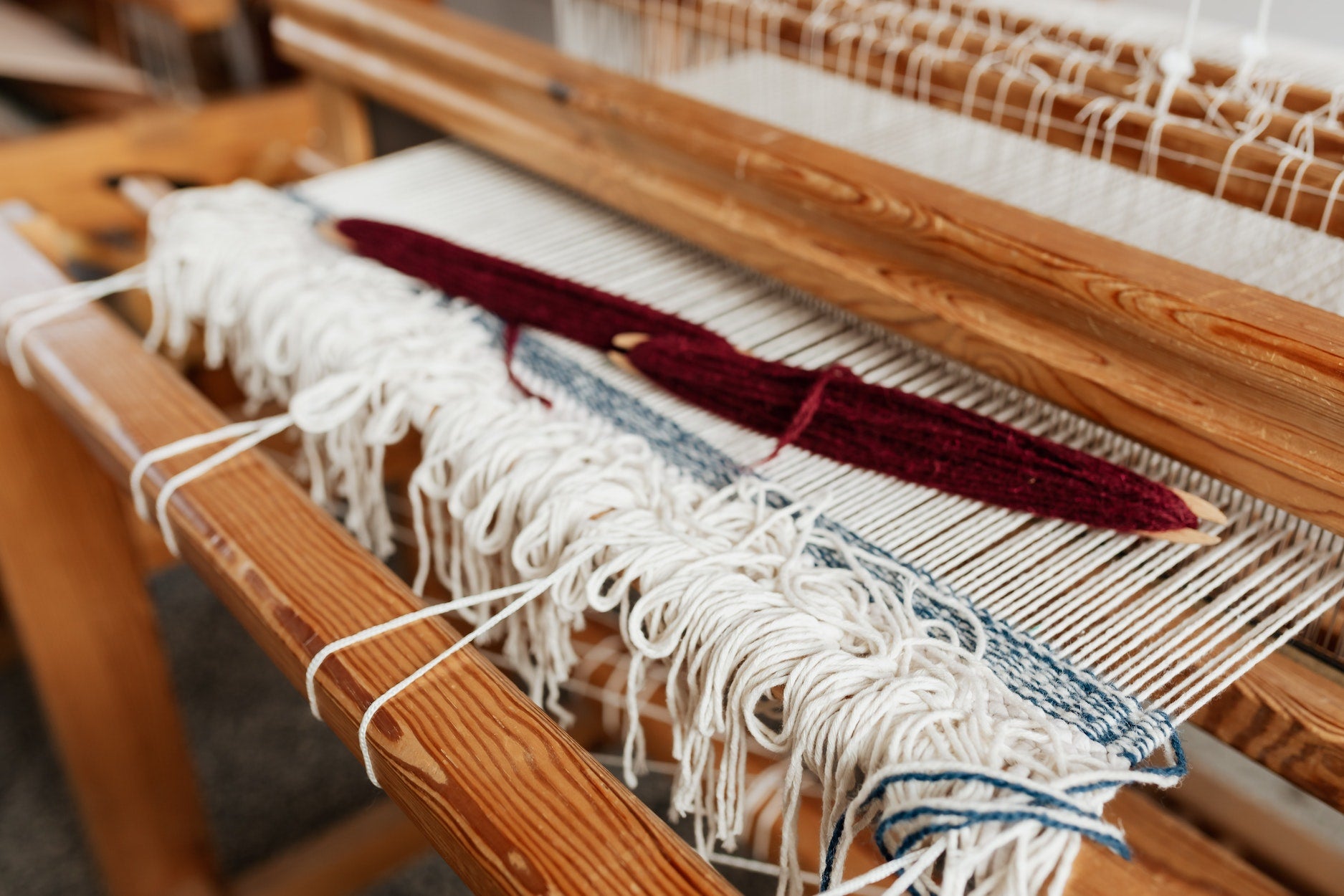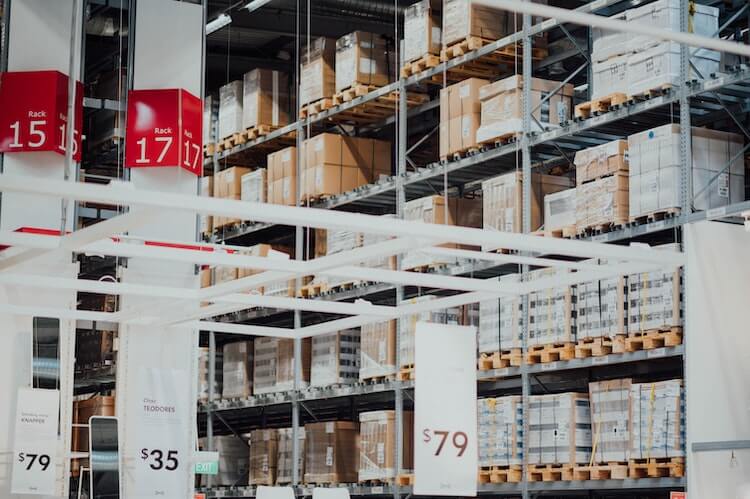Content
expand_moreAmazon Handmade and Etsy are two of the most popular online marketplaces for handmade and vintage goods. Artists, craftsmen, woodworkers, and designers can feature their work on these two platforms to millions of potential buyers.
While both marketplaces offer sellers a variety of features and benefits, they also have some key differences.
In this article, we’ll explore the differences between Amazon Handmade and Etsy, the similarities, why sell on each, and which platform you should sell your products on.
What is Etsy?
Etsy is an ecommerce website where people can buy and sell handmade items, vintage items, printable designs, and craft supplies. It is a popular platform for small, independent sellers to reach a large global audience. Etsy has nearly 100 million active buyers worldwide, with over 6 million active sellers.

On Amazon and eBay, you can find nearly every item you could ever think of, whereas Etsy is a place where customers can find customizable products, vintage items, and niche goods that you may not find on another marketplace.
If you enjoy creating, building, or crafting, Etsy can help turn your hobby into a profitable side hustle or even a full-time business.
Why sell on Etsy?
Selling your products on Etsy can offer numerous benefits for artisans and creators looking to showcase and sell their unique creations. Here are some compelling reasons to consider selling on Etsy.
- Niche audience. Etsy has built a reputation as a marketplace for handmade, vintage, and unique items. Its audience is specifically looking for one-of-a-kind products that cannot be easily found elsewhere. This focused demographic can lead to more targeted and interested customers for your offerings.
- Community and personal connection. Etsy has fostered a sense of community among both sellers and buyers. Buyers often appreciate the personal touch, craftsmanship, and story behind each product. This connection can result in loyal customers who return to your shop for future purchases.
- Customization and branding. Etsy allows you to customize your shop’s appearance and branding, giving you the opportunity to create a unique identity for your business. This branding can help your shop stand out and leave a lasting impression on visitors.
- Low seller fees. Compared to some other ecommerce platforms, Etsy’s fees are generally lower. They charge a 6.5% transaction fee, a $0.20 per-item listing fee for each item, along with a 3% + 0.25 USD payment processing fee – but no monthly subscription fee. These fees can be more manageable, especially for small businesses and individual creators.
- Artisan-focused reputation. Etsy’s reputation as an artisan-focused marketplace can enhance the perceived value of your products. Buyers come to Etsy with the expectation of finding handmade and unique items which can benefit your brand and sales.
- International reach. Etsy provides access to a global customer base. This means that your products can reach customers from around the world, expanding your market beyond your local area.
- Analytics and insights. Etsy provides sellers with valuable data and insights about their shop’s performance, customer behavior, and sales trends. This information can help you make informed decisions to improve your business strategies.
- Low-entry barrier. Starting a shop on Etsy is relatively straightforward, making it accessible to individuals who may not have extensive ecommerce experience. This allows you to set up an online presence for your creations quickly.
Cons to selling on Etsy
While Etsy is a great platform to sell on, there may be some disadvantages as well.
- High competition. With the low barrier to entry, there is a lot of competition on Etsy. This means that you will need to make sure that your products are unique and high-quality in order to stand out from the crowd.
- Fees. While Etsy’s fees are generally lower than other platforms, they can still add up, especially if you have a high volume of sales. In addition to transaction fees, there are listing fees for each item you list in your shop and payment processing fees of 3% + 0.25 USD. Make sure you calculate all your costs before selling on Etsy.
- Platform trends. Etsy’s policies and platform features can change over time based on trends and user feedback. Adapting to these changes might require adjustments to your business strategies.
Want to learn more about how to sell on Etsy? We have an in-depth article that goes over everything you need to start selling on Etsy, such as creating an account, the costs to sell, how to find products to sell, and more.
READ MORE | How to Sell on Etsy for Beginners in 2023
What is Amazon Handmade?
Amazon Handmade is an artisan-only section within the Amazon marketplace that is dedicated to selling handmade and artisan-crafted products.
Launched in 2015, Amazon Handmade was created to provide artisans and craftsmen with a platform to showcase and sell their creations to a larger audience. It’s Amazon’s response to the growing demand for handmade and personalized items, offering an alternative to mass-produced products.
Want to learn more about selling on Amazon? Check out our complete guide.
When selling on Etsy, your products don’t have to be exactly handmade by you. You can sell products that are produced by other manufacturers.
Etsy
When selling on Etsy, your products don’t have to be exactly handmade by you. You can sell products that are produced by other manufacturers.
Amazon Handmade
On Amazon Handmade, everything sold on the platform must be handmade, hand-altered, or hand-assembled; no mass-produced products are allowed to be sold on this section of Amazon.

Why sell on Amazon Handmade?
Selling on Amazon Handmade can offer various advantages for artisans, craftsmen, and creators looking to showcase and sell their handmade and unique products. Here are some compelling reasons to consider selling on Amazon Handmade.
- Massive reach. Amazon Handmade allows you to tap into Amazon’s massive global customer base – over 3.1 billion monthly visitors. This means your products have the potential to reach a broader audience compared to many other platforms.
- Profitability: Selling handmade products on Amazon can be very profitable –33% of Handmade sellers have profit margins above 20%, according to Jungle Scout’s 2023 State of the Seller Report.
- Low seller fees. Similar to Etsy, Amazon Handmade has fairly low seller fees. There is no monthly subscription fee (unlike a normal professional Amazon seller account), no listing fees (unlike Etsy), and a 15% per-sale fee (compared to Etsy’s 6.5% fee.)
- Customizable shop. Amazon Handmade allows you to create a shop profile that showcases your brand and products. While not as customizable as some other platforms, you still have the opportunity to present your brand identity to customers.
- Exclusivity. Amazon Handmade is an “artisan-only” platform, meaning Amazon has a strict application process to ensure goods are actually handmade by the person or company selling them. Amazon Handmade’s site is separate from other products listed on Amazon, giving more exclusivity to the customer experience.
- Trust and credibility. Amazon is a household name associated with reliability, efficient shipping, and excellent customer service. Selling on Amazon Handmade allows you to leverage this reputation and build trust with buyers who are accustomed to shopping on Amazon.
- Fulfillment options: With Amazon Handmade, you are able to fulfill your orders two ways, through FBA or FBM. If you are able to produce your items in bulk, FBA may be the best option for Handmade. Though if you sell customizable products, for instance, you can only fulfill with FBM.
Cons to selling on Amazon Handmade
Amazon Handmade can be a great marketplace for artisans to feature their products, but there also may be some disadvantages.
- Higher transaction fees. Amazon Handmade charges sellers a 15% transaction fee for each sale – compared to Etsy’s 6.5% fee.
- Strict seller requirements. Amazon Handmade has strict seller requirements, so only some are eligible to sell on the platform.
- Competition. There is a lot of competition on Amazon Handmade, so you will need to make sure that your products are unique and high-quality in order to stand out from the crowd.
- Amazon’s policies. Amazon has a set of policies that all sellers must adhere to. These policies can be complex and may change frequently. Make sure you are up to date with Amazon’s TOS and selling policies.
Want to learn more about how to sell on Amazon Handmade? We have an in-depth article that goes over everything you need to start selling on Amazon Handmade, such as creating an account, the costs to sell, how to find products to sell, and more.
READ MORE | How to Sell on Amazon Handmade
Amazon Handmade vs. Etsy
For artisans and creators, Amazon Handmade and Etsy are both great marketplaces to monetize your creativity and skills. No matter where you sell your products, each selling platform will have its pros and cons that are more or less suitable for each individual seller.
Though you don’t just have to choose one!
Here are some helpful features to compare Amazon Handmade vs. Etsy:
| Amazon Handmade | Etsy | |
| Fees | 15% referral fee per sale No monthly subscription fee No listing fees No other hidden fees | $0.20 per-item listing fee (have to renew every 4 months) No monthly subscription fee (they have a $10/month Plus option) 6.5% transaction fee 3% + $0.25 payment processing fee |
| Product Listings | List as many products as you want No listing fees Listings never expire Setting up listings can be difficult No UPC required | List as many products as you want $0.20 per-item listing fee Listings expire every 4 months Intuitive interface No UPC required |
| Categories | 14 categories available to sell in | 160+ categories to list in |
| Advertising | Sponsored products PPC advertising Advertise on Amazon only | PPC advertising Offsite advertising options |
| Payments | Funds not available until order is marked as shipped Payment is disbursed every 2 weeks | Funds are available to you immediately once the transaction is completed Can request daily disbursements |
| Artisan Approval | Application and audit process to sell on Handmade Must be creating the products yourself or have a team of fewer than 20 people | Fast and easy to set up your account No approval process Allowed to work with “production partners” |
| Custom Storefront | Yes | Yes |
Which platform should you sell on? Amazon Handmade or Etsy?
Ultimately, the choice between Amazon Handmade and Etsy comes down to your priorities and the specific characteristics of your business.
Some sellers even choose to diversify their online presence by selling on both platforms, capitalizing on the strengths of each. Thoroughly research each platform, consider your product offerings and business strategy, and possibly test both platforms to see where your products resonate the most with buyers.
Do you have more questions about Amazon Handmade vs. Etsy? Let us know in the comments!
Brian Connolly is an Amazon seller, ecommerce expert, and writer for Jungle Scout. He lives in the New Jersey Shore area with his wife and cat. When he isn’t writing advice online for aspiring and experienced Amazon sellers for Jungle Scout, he spends his free time boating, fishing, and selling boating-themed items on his Amazon business.




